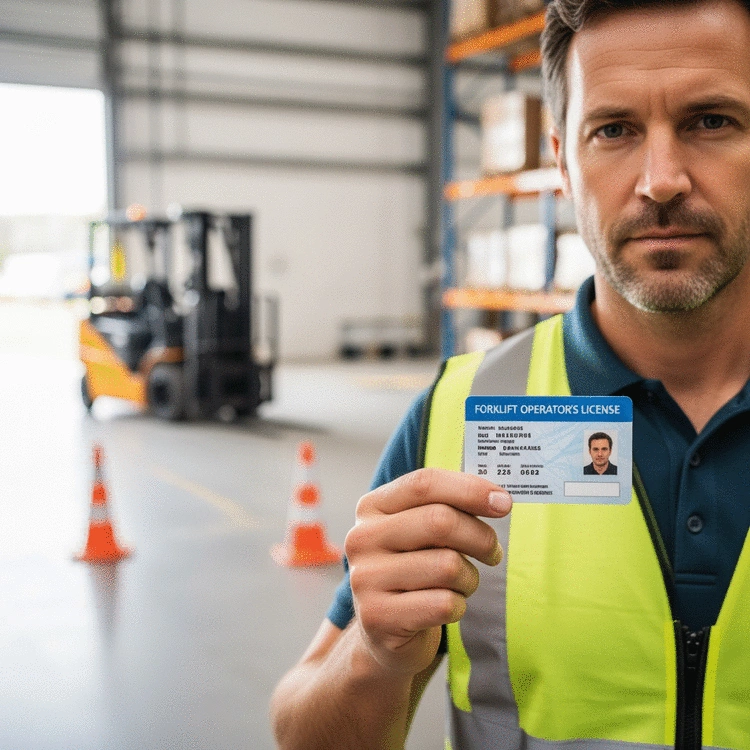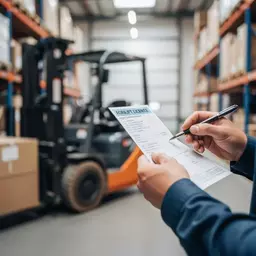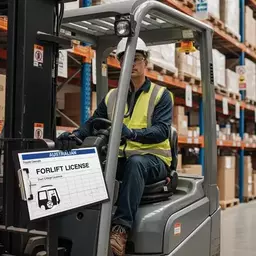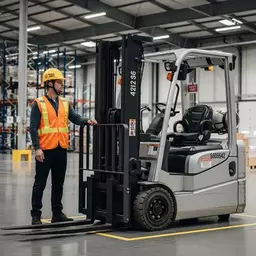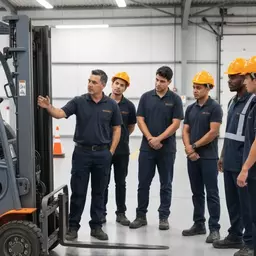Obtaining a forklift licence is more than just a legal formality—it's a vital commitment to ensuring safety and compliance in the workplace. As the industry evolves, understanding the requirements becomes crucial for aspiring operators. Ready to dive into the essentials?
What You Will Learn
- Licences Required: Different classes of forklift licences exist, such as LF for general forklifts and LO for order pickers. Selecting the right one is essential based on your intended use.
- Eligibility Criteria: Applicants must meet age and identification requirements and demonstrate English proficiency for effective communication and safety understanding.
- Training Process: Enrolling in a course with a registered training organisation (RTO) is necessary. Training typically includes both theoretical and practical components to prepare for real-world operations.
- Application Steps: Ensure all necessary documentation is ready for a smooth application process, including identification and proof of completed training.
Key Aspects of Forklift Licencing in Australia
The following outlines the essential requirements and processes for obtaining a forklift licence in Australia, covering eligibility, licence classes, and training steps. For a comprehensive guide on the entire process, refer to getting your forklift licence in Australia.
Why a Forklift Licence?
- Compliance: Meets state-specific regulations.
- Safety: Ensures trained operators, preventing accidents.
- Liability: Reduces risks for operators and employers.
Crucial for workplace safety & legal adherence.
Eligibility Criteria
- Age: Must be at least 18 years old.
- Identification: Valid ID required (e.g., driver's licence, passport).
- Proficiency: Basic English and numeracy skills essential.
Ensures operators can handle responsibilities safely.
Forklift Licence Classes
- LF (Forklift): Most common, for standard forklifts.
- LO (Order Picker): For order picking forklifts.
- 1 RS (Reach Stacker): For reach stackers in warehouses/shipping.
Different classes for varied operational needs.
Next Steps to Your Licence
- Training: Enroll in a Registered Training Organisation (RTO).
- Documentation: Prepare all necessary documents for application.
- Resources: Utilize available guides and checklists.
Prepare for a smooth training and application process.
Understanding Forklift Licence Requirements in Australia
Are you curious about why a forklift licence is a must-have in today’s workplace? It’s more than just a piece of paper—it’s a commitment to safety, compliance, and operational efficiency. In Australia, having a forklift licence ensures that operators are trained to handle equipment safely and meet workplace safety regulations that are crucial in preventing accidents. Not only does this protect the operators, but it also safeguards others in the work environment, creating a safer workplace for everyone!

Having a forklift licence is also a legal requirement in many industries. Employers must ensure that their operators are licensed, as it affects insurance, liability, and overall workplace safety practices. A well-trained operator can make a significant difference in productivity and safety.
Why is a Forklift Licence Necessary?
Obtaining a forklift licence is essential for several reasons:
- Compliance with Regulations: Each state in Australia has its own requirements governing forklift operation.
- Safety Training: A licence ensures that operators are trained in safe operating procedures.
- Liability Protection: Licensed operators reduce the risk of accidents, protecting both themselves and their employers.
In summary, a forklift licence not only fulfills legal obligations but also fosters a culture of safety and responsibility within the workplace. It’s a crucial step for anyone looking to operate a forklift.
Overview of Forklift Licence Classes in Australia
In Australia, there are several classes of forklift licences, each designed for different types of operations:
- LF (Forklift Licence): This is the most common licence, allowing operators to operate standard forklifts.
- LO (Order Picker Licence): Specifically designed for operating order picking forklifts.
- 1 RS (Reach Stacker Licence): This licence is required for operators of reach stackers, which are typically used in warehouses and shipping areas.
Each class comes with its own set of training requirements and operational limitations. Understanding these distinctions is pivotal, as it helps aspiring operators select the right training pathway that aligns with their career goals. At Forklift Licence Insights, I encourage all prospective forklift operators to familiarize themselves with these classes so they can choose the right one for their needs. For a detailed comparison, check out the LF vs. LO forklift licence requirements.
Eligibility Criteria for Obtaining a Forklift Licence
Age and Identification Requirements
When it comes to obtaining a forklift licence, there are specific eligibility criteria that must be met. Firstly, applicants must be at least 18 years old, as this age requirement ensures that individuals are mature enough to handle the responsibilities of operating heavy machinery. Additionally, valid identification is necessary, which can include a driver’s licence or passport. It's important to have these documents ready as they will be required during the application process.
Being prepared with the right identification not only speeds up the application process but also helps avoid any unnecessary delays. Remember, ensuring you meet these basic requirements is your first step toward becoming a licensed operator!
Language Proficiency and Other Essential Skills
In addition to age and identification, language proficiency is critical. Applicants must demonstrate a basic understanding of English, as training will involve technical terminology and safety instructions that need to be comprehended fully. If English isn’t your first language, don’t worry! Many training organisations offer support and resources to help you succeed.
Furthermore, basic numeracy skills are also essential, particularly for tasks involving weights, measures, and calculations related to load handling. Preparing yourself with these skills can significantly enhance your training experience and boost your confidence!
Interactive Poll: Your Forklift Journey
As you consider obtaining your forklift licence, we want to hear from you! What aspect of the licensing process do you find most challenging?
Frequently Asked Questions About Forklift Licencing
Key Takeaways on Forklift Licence Requirements in Australia
Understanding the forklift licence requirements in Australia is crucial for anyone interested in pursuing a career in forklift operation. From recognizing the necessity of a licence to navigating the training and application processes, here are the essential points you should keep in mind:
- Licences Required: There are different classes of forklift licences, including LF for general forklifts and LO for order pickers. It’s important to choose the right one based on your intended use.
- Eligibility Criteria: You need to meet specific age and identification requirements, as well as demonstrate English proficiency for effective communication and safety understanding.
- Training Process: Enrolling in a course with a registered training organisation (RTO) is a must. The training typically combines theory and practical sessions to prepare you for real-world operation.
- Application Steps: Ensure you have all necessary documentation ready for a smooth application process, including identification and proof of completed training.
By following these key takeaways, you can set yourself up for success in obtaining your forklift licence. Remember, this is not just about compliance; it’s about ensuring workplace safety and enhancing your career prospects.
Taking the Next Steps Toward Your Forklift Licence
Ready to embark on your journey toward obtaining your forklift licence? Here are some next steps you can take:
- Explore Local Training Options: Research and choose a reputable RTO in your area. Look for reviews and feedback from other students to ensure quality training.
- Check Your Eligibility: Make sure you meet the age and identification criteria. Gather necessary documents to streamline your application process.
- Prepare for the Application: Familiarize yourself with the forms and requirements. A little preparation can go a long way in making everything easier!
As the owner of Forklift Licence Insights, I encourage you to take these steps seriously. Achieving your forklift licence is not just a goal; it’s a stepping stone to a fulfilling career in many industries! For more comprehensive guidance, explore our forklift licence training guide for Australia.
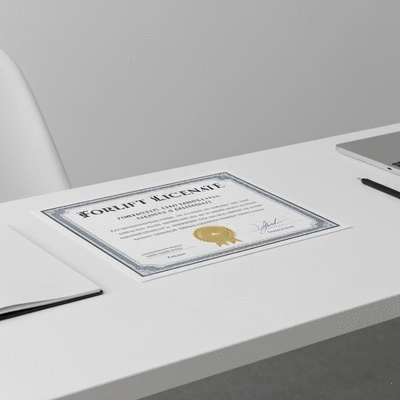
Downloadable Resources for Your Forklift Licence Journey
To assist you in navigating the licensing process, I’ve compiled some valuable resources:
- Application Checklist - A handy guide to ensure you have all required documents ready.
- Preparation Guide - Tips and best practices to help you ace your training and assessment.
These resources are designed to simplify your journey and boost your confidence as you work toward your licence.
Join the Community of Licensed Forklift Operators
Are you ready to connect with fellow forklift enthusiasts? I invite you to share your experiences, ask questions, and engage with others on their licensing journey!
- Join our forum to discuss training tips and share success stories.
- Follow us on social media for updates and community events.
- Participate in Q&A sessions where you can get direct answers from experienced operators.
Joining our community at Forklift Licence Insights not only enhances your learning but also helps you feel supported throughout this exciting journey!
Recap of Key Points
Here is a quick recap of the important points discussed in the article:
- Licences Required: Different classes of forklift licences exist, including LF for general forklifts and LO for order pickers. Choose the appropriate one based on your intended use.
- Eligibility Criteria: Applicants must meet age and identification requirements and demonstrate English proficiency for effective communication and safety understanding.
- Training Process: Enroll in a course with a registered training organisation (RTO) that combines theory and practical sessions to prepare you for real-world operation.
- Application Steps: Have all necessary documentation ready, including identification and proof of completed training, for a smooth application process.
